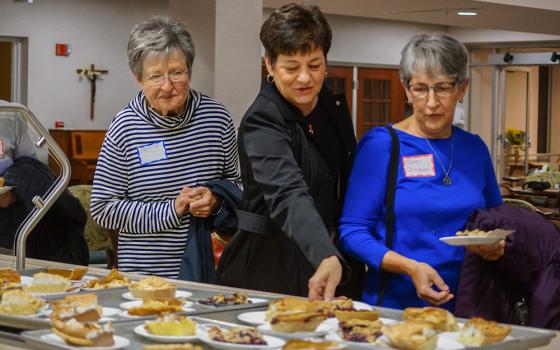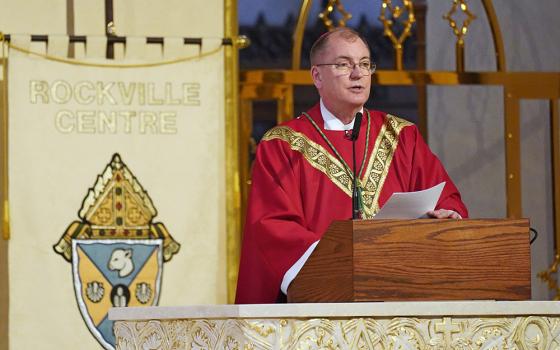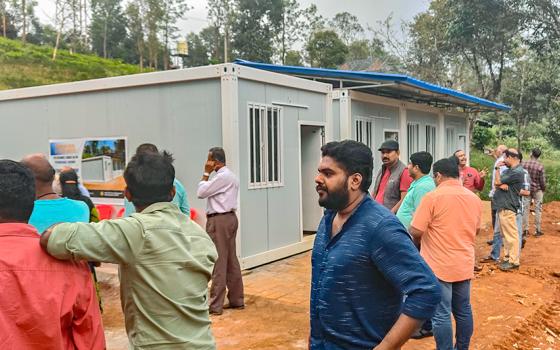
MUMBAI, India
This is an East-West story that began in France over 200 years ago. It has traveled and evolved through more than 40 nations, entering India 70 years ago.
It is a story of courageous and dedicated women who have given their lives to Gospel formation, including the empowerment of some of the poorest of the world’s poor women.
It was in the year 1800 that a 21-year-old woman named Madeleine Sophie Barat, responding to a religious call, made her first vows in Paris and soon after set off with companions to follow that call. This was the founding the Society of the Sacred Heart, now a worldwide religious order.
Barat died 65 years later, leaving 3,539 Sacred Heart religious in 99 communities in Europe, North America and Africa.
Today, some 70 women from the society work in India as well as in more than 40 other nations. Their primary mission has been education and with this call, especially following the Second Vatican Council (1962-65), they have branched out into many teaching roles, often with a focus on the poor.
The Sacred Heart sisters’ work in India in education and with the poor has won them wide acclaim, except with the hardest of anti-Catholic fundamentalists here.
 It was in 1939 the sisters first arrived in India, setting up Sophia College for women in Mumbai. In a few years the name of the college came to represent the highest quality of education for women in the country. Years later, they are still known widely and are also praised for the self-help empowerment groups in rural areas. These groups, often run by teams of three or four Sacred Heart sisters, have become models for nonprofit organizations and government efforts.
It was in 1939 the sisters first arrived in India, setting up Sophia College for women in Mumbai. In a few years the name of the college came to represent the highest quality of education for women in the country. Years later, they are still known widely and are also praised for the self-help empowerment groups in rural areas. These groups, often run by teams of three or four Sacred Heart sisters, have become models for nonprofit organizations and government efforts.
Sr. Marie Noronha, former provincial of the Sacred Heart sisters and one of the society’s longest-serving sisters, recalls the shift in emphasis that occurred in her order with its 1976 chapter. She recalls the words in the chapter’s paper: “Caught in a world that is unjust and dehumanizing, we feel the need to embrace every means in our power to proclaim the faith and to broaden our work in education to include work for the poor in different ways: legally, socially and economically.”
And so in the years that followed, the congregation sent out teams of sisters to begin rural outreach programs. Noronha says she was young then and “on the eve of her profession.” She said she made “a conscious choice to work for the poor.”
Spurred by enthusiasm of Vatican II, created by the call in the society’s chapter revisions to make an option for the poor, the sisters went to work with village tribes in the state of Maharashtra. The nuns worked alongside villagers in the fields, stayed with them, sharing their life in primitive mud huts, practicing “an apostolate of presence.”
Jesuits invited the sisters to give them support with the tribal villagers and the sisters began to teach in 11 primary schools near the town of Talasari. Gradually, a high school for tribal girls was started by the Jesuits and the nuns helped by running a local hostel.
The sisters began more work with the poor in Masaurhi, a village 50 miles from Patna in Bihar. Here they got involved with dalits, the nation’s social outcasts. Sr. Thelma Gonsalves led the team in Masaurhi. In 1992, this rural work in Patna ended and the sisters moved to the city proper where their service continued for school dropouts.
Another major rural initiative took place in Torpa, a rural outpost in Jharkhand. Here an empowerment center was started in 1984 by Sr. Karuna Mary Braganza, a longtime social activist. She organized tribal women, starting nurseries, launching teacher training programs, and introducing sewing, embroidery, food and vegetable preservation techniques, composting and vermiculture. Today, the six acres of land she developed have become an oasis of fruit trees, kitchen gardens and mushroom cultivation, all helped through microcredit raised from local banks by the self-help groups.
It was also in this period the sisters began working on the outskirts of Mumbai, teaching locals farming techniques, setting up small dairies, opening nurseries, and encouraging children to attend school.
 The sisters opened a school for girls in Haregaon and it enabled the order to spread its work among the dalits. The nuns set up a residential high school for girls and followed that with a middle school, which soon began to attract young girls from neighboring areas.
The sisters opened a school for girls in Haregaon and it enabled the order to spread its work among the dalits. The nuns set up a residential high school for girls and followed that with a middle school, which soon began to attract young girls from neighboring areas.
Noronha says she spent 11 years teaching English as a third language. It was the intention of the sisters to spread literacy and through that new literacy to create new self- awareness and self-respect.
She said: “Our work was to create a desire and love for education. For 20 years we provided teacher training for primary school teachers from the surrounding villages.” One of the principal focuses of the Sacred Heart sisters became the establishment of balwadis, or nurseries. Prodded by the women, the government eventually decided to set up its own nurseries.
She recalls: “Our activities fanned out into running evening schools for dropouts and adult literacy classes. Teachers were taught learning skills and, in turn, they supervised the study of students from the surrounding villages. We carried on village extension work and promoted primary education on a regular basis, using innovative methods of teaching such as storytelling and skits.”
“The work we did,” she added, “revolutionized us, the way we thought, and in the end, we became identified with the people we served. I am to this day called a ‘Haregaon sister,’ ” she said with considerable pride.
“Our initiatives in Haregaon and the surrounding villages” she continued, “were slowly extended and expanded into adult literacy programs and a women’s empowerment center six miles away. In this way we began revolutionizing the villages around.”
That empowerment center was called Seeds of Hope and it provided training in nursing, embroidery, handicrafts, soy cultivation, dairy farming and food processing. Women at the center were taught how to raise money through microfinance. These income-generating activities changed the lives of many women.
Sr. Daphne Sequeira, who works at the center, says the Sacred Heart sisters “are called to be hope for the hopeless, to be the voice of those with no voice, to empower the powerless.”
 One of the major missions of the Sacred Heart sisters is found today at the Sophie Center in the state of Bihar. In the region the attitude toward education is mostly one of indifference and many young children drop out of school. The center uses remedial teaching to make up for what the children have missed, preparing them to pick up studies that will later allow them to join larger schools. Stigmatized by poverty and by their low-caste status, the children have much to overcome. Building confidence is one of the main tasks of the sisters at the center.
One of the major missions of the Sacred Heart sisters is found today at the Sophie Center in the state of Bihar. In the region the attitude toward education is mostly one of indifference and many young children drop out of school. The center uses remedial teaching to make up for what the children have missed, preparing them to pick up studies that will later allow them to join larger schools. Stigmatized by poverty and by their low-caste status, the children have much to overcome. Building confidence is one of the main tasks of the sisters at the center.
Sacred Heart Sr. Pratibha Pinto, the current provincial of India, now thinks back over the past 70 years and is clearly proud of what she calls the congregation’s “multifaceted approach” to education, in which both “rich and poor all find a home and are cared for as children of God.”
Over the decades the face of the Sacred Heart sisters in India has changed, mirroring wider changes that have occurred in the congregation as fewer vocations have come out of Europe and North America and more out of developing countries.
Today there are some 2,500 sisters at work in 43 countries. The 70 professed Sacred Heart sisters in India are either in final vows or are young professed. Of these, 32 are in full-time ministries. An equal number of retired women are doing part-time pastoral work.
Even before the Second Vatican Council in the mid-1960s, the Indian province of the Sacred Heart sisters was grooming Indian women for leadership roles. Soon after the council, the sisters had their first Indian provincial.
Today it is more likely that young women will join the Sacred Heart sisters in countries like India, Korea, Uganda and Kenya than in the United States, Europe and Australia. Regardless, the work of education and empowerment continues here in India and the lines between East and West sometimes seem to disappear.
Janina Gomes is a writer who contributes to NCR and lives in Mumbai.



